
Thank you!
Thank you for subscribing. Monthly newsletter will be emailed to your registered email ID.
Global digital commerce sales are expected to hit $5 trillion in the year 2022 and skyrocket to $6 trillion by 2024. Digital commerce sales in the US alone are expected to cross $1 trillion in 2022, a milestone that was expected to be reached only in 2024 before the pandemic hit. (Insider Intelligence forecast).
What the above numbers indicate is that if anything, digital commerce is only going one way in the future – up. And adversity in the market will bring challenges, yes, but it will throw the doors wider open for businesses that are ready to adapt and surge forward.
Global digital commerce sales are expected to hit $5 trillion in the year 2022 and skyrocket to $6 trillion by 2024.
The upsurge in digital commerce is not very hard to understand. Whether it’s a product or a service, the sheer convenience of online shopping, combined with an instantly expansive range of products or services to choose from, makes online shopping far more rewarding. For businesses, the channel provides great opportunity to expand geographically, reach more customers, and drive revenue organically.
These benefits, of course, are subject to the business’s ability to get noticed by prospective customers, instill enough trust to sell products or services to them, and create an experience that evokes loyalty to ensure repeat customers and advocacy. Hence, digital merchandising (aka. eCommerce merchandising).
Digital merchandising, or eCommerce merchandising, is the art and science of highlighting products or services you want customers to see and buy while enriching the overall shopping journey.
This must be achieved without creating a hindrance in the shopping journey, ensuring that the customer has a smooth, seamless ride. In other words, if digital commerce is about selling products to customers, digital merchandising is about how these products are sold. Branding, imagery, product placement, categorization; these are all elements of digital merchandising that motivate customers to hit the ‘add to cart’ button.
While a large number of customers are now comfortable with shopping online, there are still many that don’t trust the experience. There are variables that businesses may not always be able to control. A prime example is shipping costs, or time taken for delivery. However, there are many other hindrances that can be taken care of with sound digital merchandising. For example, one of the biggest roadblocks customers face when shopping online is the absence of a tactile experience – the ability to touch and feel a product before buying it. While technology hasn’t reached a point where this can be made possible (not yet, anyway), the right use of imagery, video, and information (dimensions, material etc.) can be leveraged to build customer confidence. Combine this with user-generated content (reviews, ratings, customer images and videos), and you get a well-rounded online shopping experience that comes close to, or even surpasses, an in-store experience.
The exponentially increasing number of eCommerce websites across the internet means that as opportunities open up, so does the competition. This also presents businesses with the unique opportunity to stand out from the rest, and truly make an impact. Here are some effective digital merchandising best practices to help your businesses achieve this:
In most cases, your home page is the first interaction your customer has with your business. So, obviously, it presents a great opportunity to create a great first impression.
To begin with, you must nail the basics and make the homepage appealing to customers. Have the right imagery, engaging copy that’s not too verbose, graphics, videos and the right design to tie it all together. More importantly, your homepage presents the opportunity to promote your highest converting products, highest rating products or currently trending products. Ensure you make the most of it.
Pro Tip: Pick a product and/or offer that is most likely to attract most customers and make it amply visible on top!
Check out how Apple uses the home page to display its newest releases:

Customers expect organic and relevant results when they search for products on your website. So, you must ensure that your internal site search is tuned for this. Get an in-depth take on how to fine-tune internal site search in our blog: Driving Product Findability – Part 2 – Site Search
Here’s a summary of steps you can take to make sure your site search is bang on, not just to align with customer expectations, but also push revenue:
Pro Tip: If any of the search results have offers, promotions or discounts on them, make sure to highlight the same with promotional badges.
The site search on the Adidas homepage is a great example for some of these points:
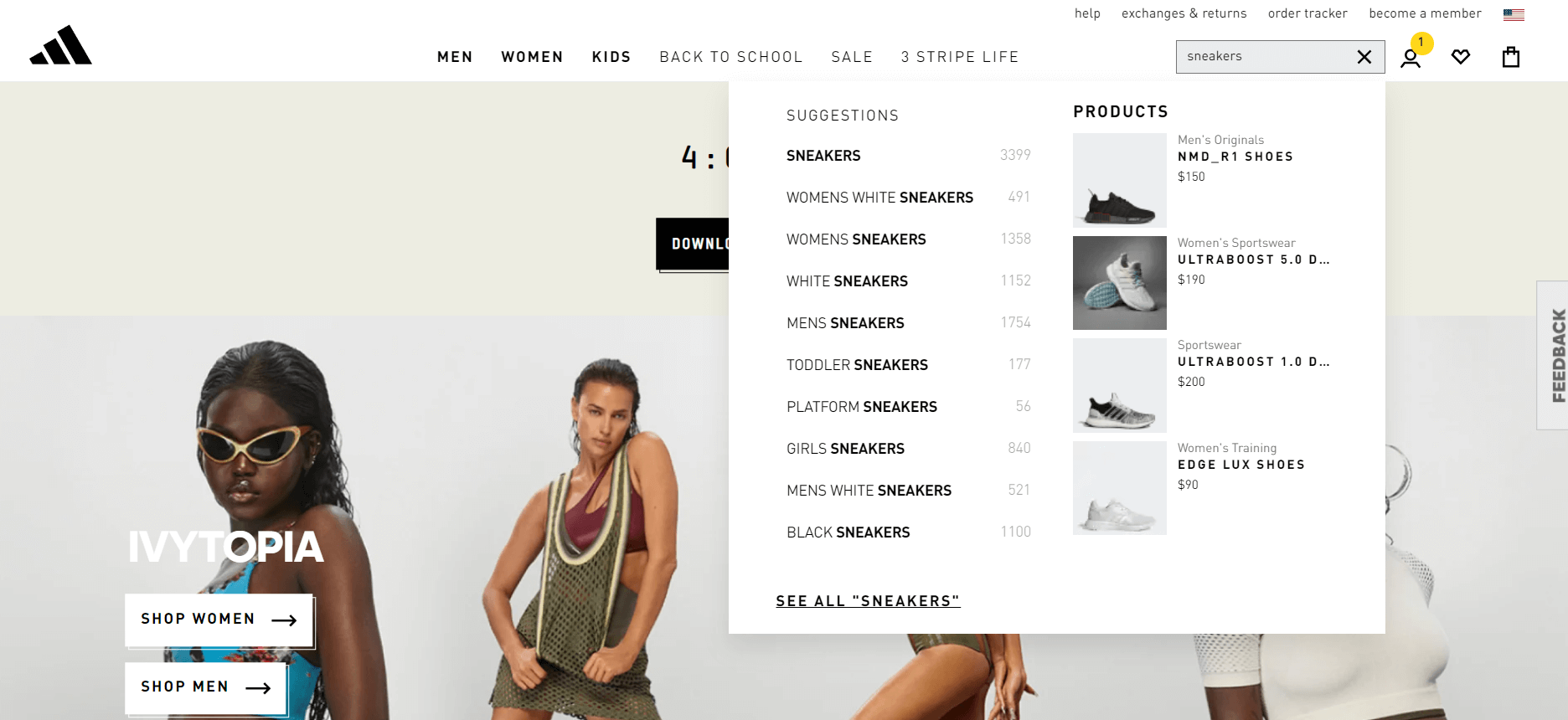
While some shoppers search for products on your website, others prefer to navigate through your website to find what they’re looking for. And this is where navigation and categorization can play a vital role in enabling a smooth buying experience.
Taxonomy/Navigation: The path customers follow to reach the product they are looking for. For example, to find earphones, a customer would follow a path that looks like this: Audio -> Accessories -> Earphones -> In Ear
Categorization: Grouping of products that fall under a homogenous broader category. For example, women’s tops, shirts, t-shirts etc. fall under the larger category of Women’s Uppers.
For a detailed take on how navigation and categorization drives findability, check out our blog: Driving Prroduct Findability – Part 1-Taxonomy
For a detailed take on how navigation and categorization drives findability, check out our blog: Driving Prroduct Findability – Part 1-Taxonomy
The key to building effective taxonomy is to have a logical and intuitive flow to place products under various categories. This requires a thorough understanding of your products, industry standard practices for these products, and your target customer. Not only should this be done to ease findability, but also with SEO in mind. Another great way to further drive SEO and site search is the use of attributes (Example: Product type, size, style, fit, features, uses etc.)
Amazon’s taxonomy and categorization is a great example of handling a large volume of various product categories.

Keep in mind that categorization of products is not restricted to product types. You can also group products by season, trends, offers, collections and other similar parameters to increase cross-selling opportunities.
While your homepage is the first interaction your customer has with your brand, the product display page (PDP) is where your customer first interacts with the product.
Designing a strong PDP for better digital merchandising is not very different from doing so for a home page, as in it should have the following qualities:
You can check out our blog on PDP optimization to make the most of your PDP here: The What, Why & How of an eCommerce Best Practice
This PDP on the Marshall website is a great case in point. By selling amplifiers, the company realizes the importance of sound in the transaction. Hence the availability of actual audio samples on the PDP:
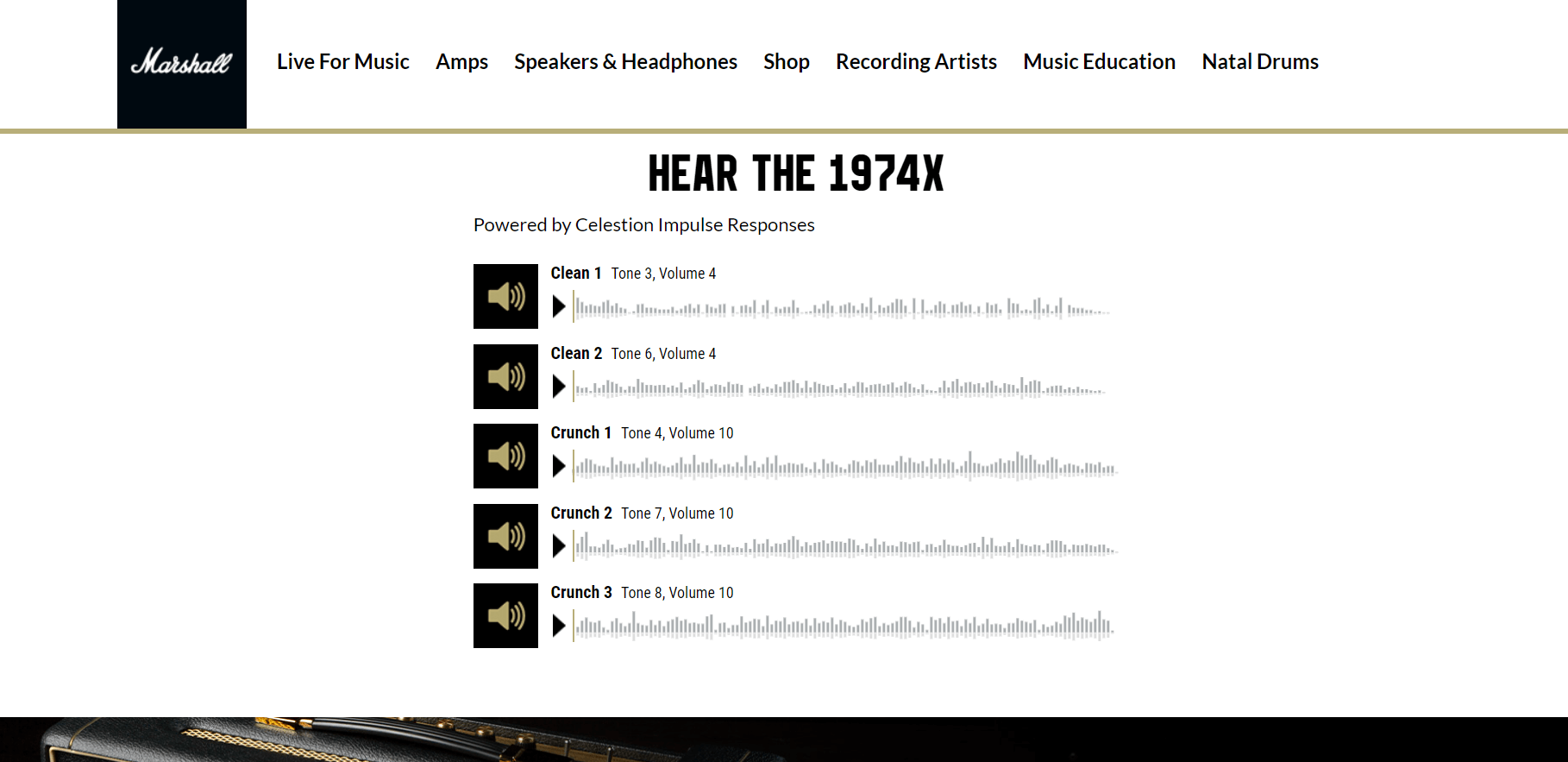
Personalization offers businesses a great opportunity to increase average order value (AVO) and more importantly, customer loyalty. Customer data is the most valuable aspect in this respect. However, when collecting this data, businesses need to keep things transparent and open, and respect customer privacy. Not only does this help overcome regulatory challenges, it lets your customers know that they can trust you.
Customer data drives better personalization, but transparency is the key to making it work
At the most basic level, customer location, demographic information, season of the area where they reside, location etc. can be leveraged to create personalized buying journeys. A level deeper, customer behavior and actions on your website can also be used to further personalize campaigns. This data can be used to personalize both, product recommendations, as well as search results. This is one of the most effective way to cross-sell and upsell products which brings us to our initial point – AVO
Here's a great example from Edge that demonstrates how to make the most of customer data, such as a birth date, to create a warm, personal interaction with the brand:
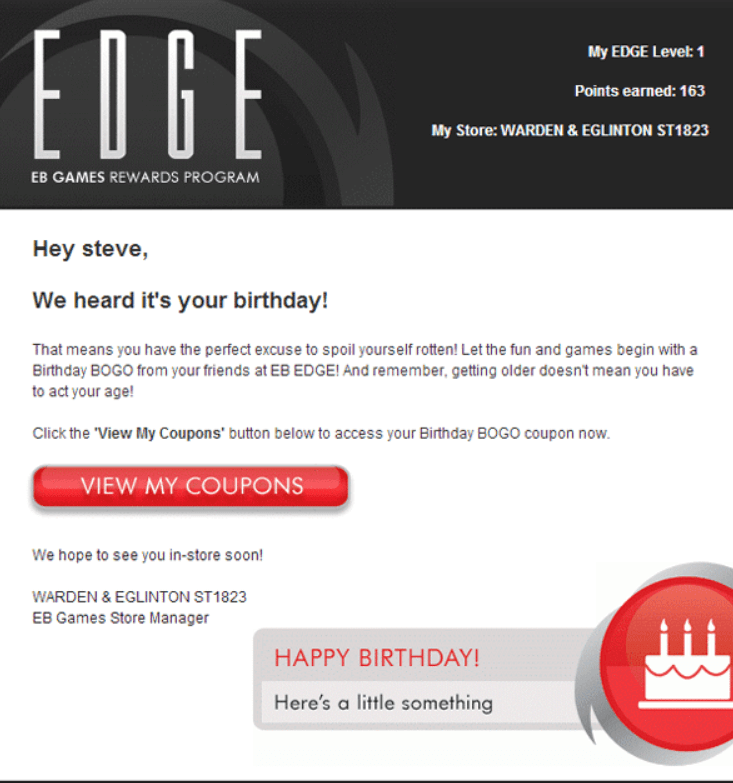
As an extension to personalization, cross-selling and upselling play an equally significant role in increasing order value. Perhaps, this approach requires even lesser effort than personalization, as it is based on the grouping and semantic relationship between your products.
Cross-sell: “Buying some fries? Would you like a soda too?”
Upsell: “Buying medium fries? Try our large fries!”
With cross-selling, you take the opportunity to make the customer aware of other related products that he/she might be interested in, but might not be aware of. On the other hand, it might also create a need for the related product that didn’t exist before. However, it is important to keep in mind that when cross-selling a product, the intention should be to increase the value of the originally purchased product, or add value to the overall experience being sought when purchasing the original product.
Upselling is another kind of a value-add, wherein you make the customer aware of the same product, but in a larger capacity. Incentivizing upselling is usually achieved by offering discounts or added benefits in going for the upgraded purchase. In the example of the fries, if you’re asking the customer to go for ‘large fries’ instead of ‘medium fries’, the large ones must cost marginally lesser than two medium fries put together.
Here’s an example of GAP’s simple, yet effective cross-selling strategy:
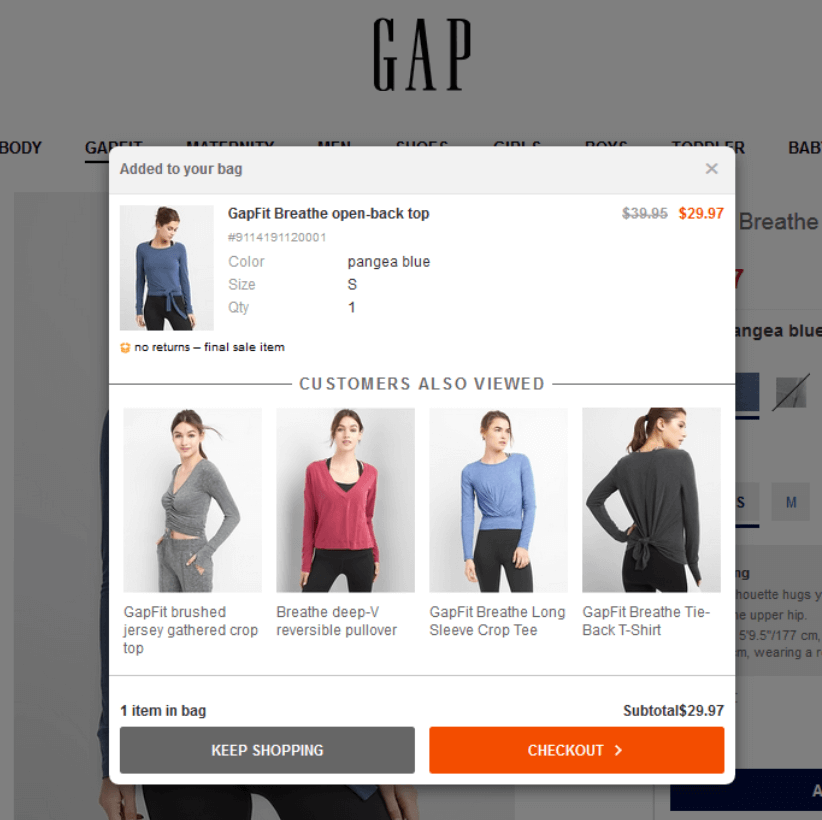
User-generated content and customer reviews are perhaps that easiest way to garner credibility for a product, as well as the brand at large. They show that actual people use your products, and they are happy with it (assuming you have a good product and service).
92% of customers rely on recommendations and reviews from other customers. 87% of brands use UGC to build credibility with customers. - Neilsen
Reading reviews, checking out social media coverage, looking for testimonials – these are all now undeniable parts of the buying journey. It is safe to say, UGC is now an inevitable part of authentic eCommerce journeys. While some consider it to be a gamble, UGC lends an irrefutable air of authenticity to a business, even if fanned by a few negative reviews now and then.
These 2022 numbers from brainlabs shed light on the real value of UGC over conventional advertising:
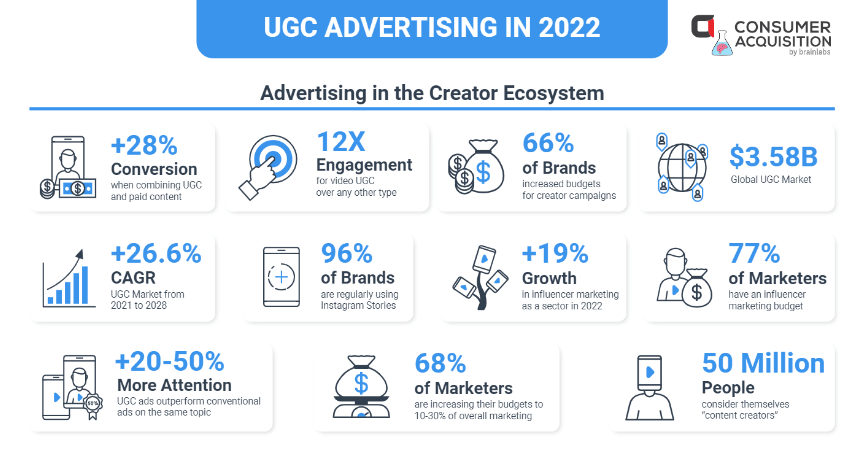
As the digital commerce landscape evolves year on year, digital merchandising (or eCommerce merchandising) is evolving too. This evolution has made it clear that customers are looking for more authentic, tangible and tactile experiences, and this demand is only going to grow further. The competition will always be there, it will increase even further, but the key to effective digital merchandising lies in knowing your business, knowing your customer, and creating an undeniable connection between the two using the best practices mentioned above.
Need more guidance with your digital merchandising journey? Try Amaze PXM!
Talk to one of our digital merchandising experts today: Schedule an Introduction